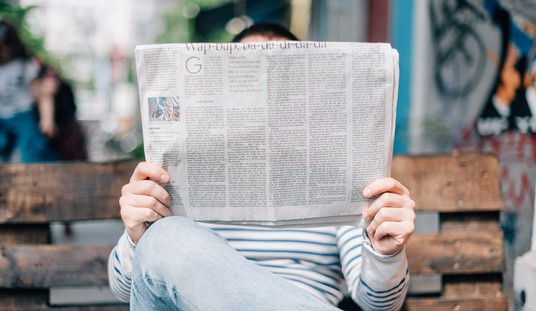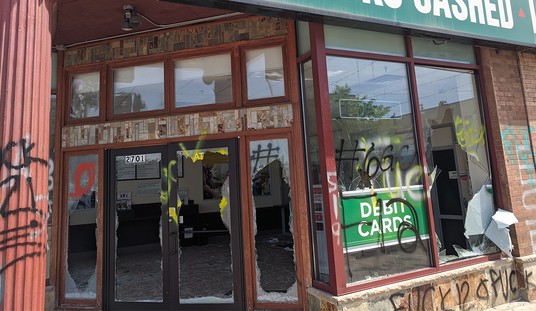I bring you shocking news, gentle readers. If you take thousands of incarcerated felons and turn them loose on society, and you then allow the federal government and cultural elites to demoralize the police officers charged with keeping these liberated hoodlums in line, you end up with higher crime. Who would have dared imagine it?
This is the state of affairs in California, where a succession of imprudent decisions by judges, lawmakers, and the electorate have combined to throw open the prison gates to swarms of men who in a sane world would have remained locked away at a safe remove from the law-abiding public. The most recent of these affronts to good order was the passage of Proposition 47, which was approved by a wide margin in last November’s election. The law, known to its advocates by the Orwellian title “Safe Neighborhoods and Schools Act,” reclassified certain felony crimes as misdemeanors. Previously, offenses such as drug possession, writing bad checks, and theft of property worth less than $950 could, under certain circumstances, be prosecuted as felonies, a tactic most often employed with repeat offenders.
No more. These charges are straight misdemeanors now, and with the deterrent effect of a potential state prison sentence no longer hanging over those who practice these behaviors, the criminal underclass has responded accordingly. With the risk-reward ratio now skewed to their benefit, these criminals are acting as one would expect. And worse, the law is retroactive; those serving prison time for these crimes can petition the courts for release. More than 2,700 prisoners have already been turned loose under the new law.
Proposition 47 followed a legislative initiative known as AB 109, which sought to remedy overcrowding in California’s prisons. Distilled to its essence, AB 109 mandated that certain felons serve their time in county jails rather than state prisons, and it transferred the responsibility for post-release supervision of some convicted felons from the state to the counties, with the result being that many ex-cons are not getting the attention they deserve. Add to these blunders the poisonous effects of the “hands up-don’t shoot” movement which, though based on a lie, persists in shaping public opinion about America’s police officers, and you have an ideal environment for crime to rise.
And behold the harvest. “LAPD struggles with spike in violent crime, shootings,” read the headline over a March 24 story in the Los Angeles Times. Shootings in L.A. are up 31 percent this year as of March 21, which translates to 54 more people shot than during the same period last year. Disturbing as those numbers are, they don’t tell the whole story. As with most violent crime, shootings in Los Angeles are largely confined to the four patrol divisions that make up the South and South-Central areas of town. In Southeast Division, which patrols Watts and nearby communities, shooting victims have increased by 17 percent. But this is positively bucolic when compared to the three neighboring divisions. In 77th Street Division, shooting victims are up by 47 percent, in Newton it’s 153 percent, and in Southwest, which patrols the area near USC, the jump in shooting victims is a horrifying 171 percent.
These numbers reflect a stubborn reality, one that we’re not supposed to talk about in the era of “hands up, don’t shoot.” In 2014, 260 people were murdered in all of Los Angeles, which is covered by officers assigned to 21 separate patrol stations. But just over half of these murders were committed in the four divisions named above, those collectively known to the cops as the “South End,” an area whose population is less than 17 percent of the city’s as a whole. The great majority of violent crime in L.A., as is the case in any other city you could name, is committed by young black and Latino males, but a cop can only get into trouble if he admits that these statistics influence his actions on the job.
If this upward trend is to be reversed, it will require dedicated cops to go out on the streets to do the type of police work that deters and prevents crime. Consider: a pair of officers checks out their gear and loads up into a black-and-white, then heads out on patrol. They spot a young man they recognize as a gang member, one with a history of violence. There is something — in his gait or in the way he tugs at his clothing or in the way he tries to face away from the passing officers — that suggests he is carrying a gun (yes, good cops can spot these things). Do our two cops drive on and wait for the radio call of a robbery or shooting, or do they stop their car and risk a foot pursuit or an altercation or even an exchange of gunfire in the knowledge that they could be the next Darren Wilsons, the next pariahs of the American media?
Evidence suggests LAPD officers are choosing the safer option: Arrests in Los Angeles were down 15 percent in 2014 even as crime increased. One reason for this is simple career survival. It has been clearly demonstrated that one’s chances for promotion in the LAPD, with precious few exceptions, are not enhanced by feats of good police work. The path to higher rank leads through administrative jobs, where the risk of personnel complaints, to say nothing of the risk to one’s mortal hide, is minimal.
Compounding this problem is the increasing presence of cameras in police work. Cameras have been installed in most of the police cars in South L.A. for years, and soon every black-and-white in the city will have them, just as every street cop will be wearing one on his uniform. Cops do not fear the cameras or what they might reveal as long as the captured footage is viewed and evaluated by someone with actual street experience. But what often happens is that patrol officers’ actions are scrutinized by people who have spent their careers avoiding the very duties they nonetheless see themselves qualified to judge. (See here, for example.)
In 1966, 225 people were murdered in Los Angeles, a figure comparable to last year’s total. Who would have imagined that by 1992 that number would be 1,097? The city has seen a steady decline in violent crime since then, but now the downward trend has been reversed. How high can it go? In the years to come, will all those cameras show dangerous people being arrested, or will they just show a lot of bodies lying in the streets?










Join the conversation as a VIP Member